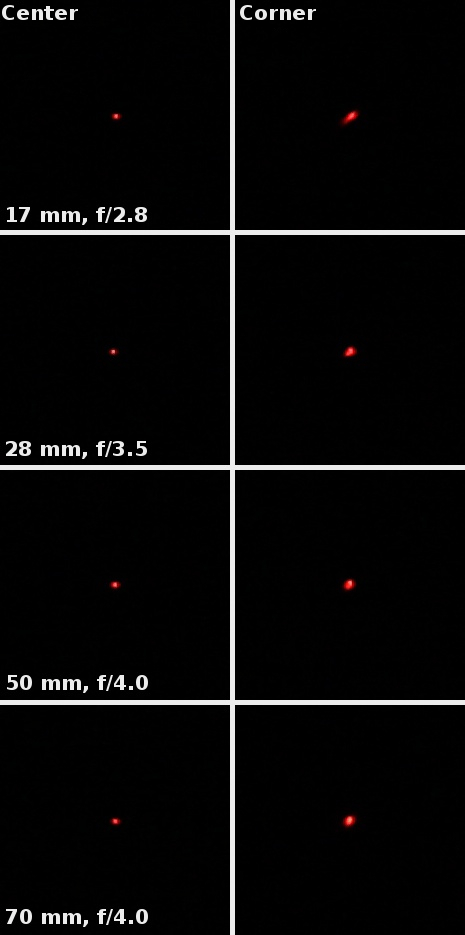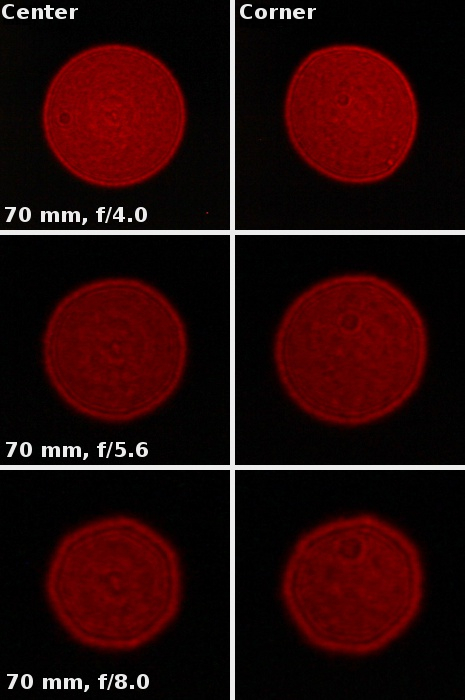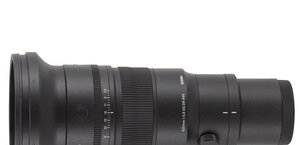Sigma C 17-70 mm f/2.8-4.0 DC Macro OS HSM
7. Coma, astigmatism and bokeh

In the case of the older model of the tested Sigma the astigmatism was on a level of 4.3%. When it comes to the new model it is a bit higher, reaching 5.3%. Still taking into account the margin of error those results can be considered similar and low at the same time. In this category there are no reasons to complain.
Please Support UsIf you enjoy our reviews and articles, and you want us to continue our work please, support our website by donating through PayPal. The funds are going to be used for paying our editorial team, renting servers, and equipping our testing studio; only that way we will be able to continue providing you interesting content for free. |
- - - - - - - - - - - - - - - - - - - - - - - - - - - - - - - - - - - - - - - - - - - - - - - -
At the end of this chapter let’s find out how the blurry areas look, with the help of photos of defocused light points, positioned in the frame centre and in the corner of the frame. At the maximum relative aperture the light spread in the circle is more or less even. After stopping down a distinct rim on the edge appears - it might spoil a bit the positive perception of the blur.







